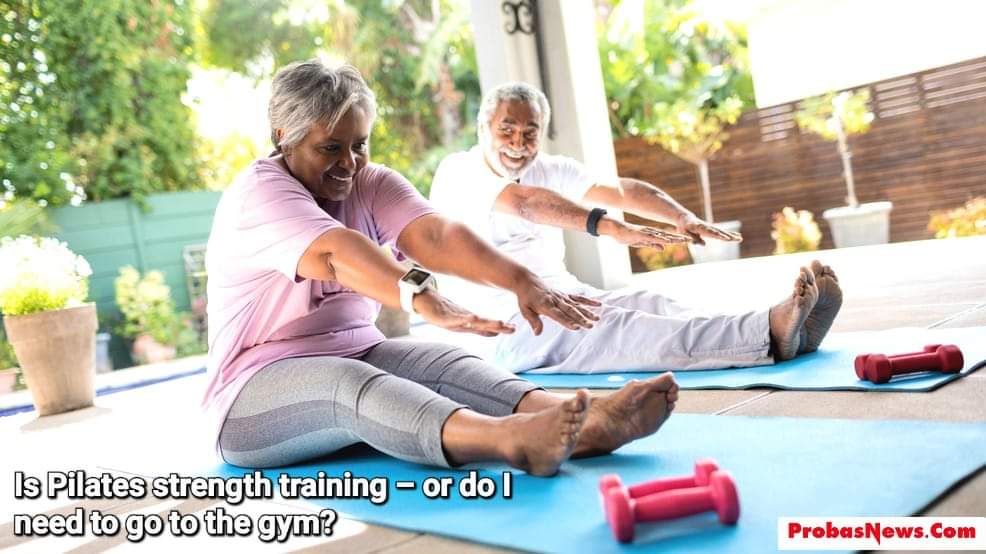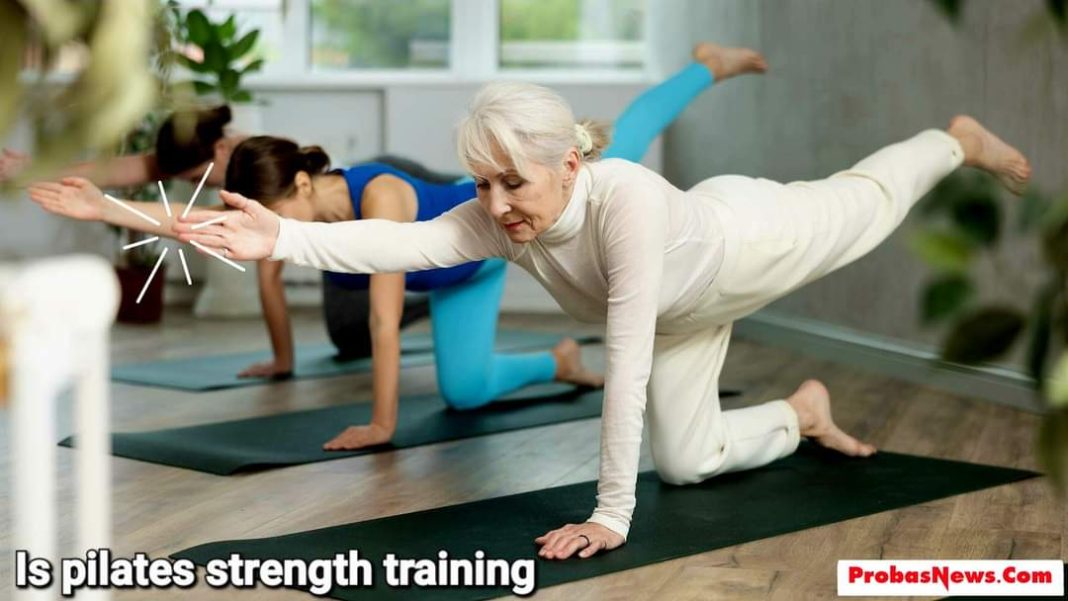Is Pilates strength training
Strength exercise should be included into all of our daily activities as we become older. Numerous advantages include making us stronger, safeguarding our bones, and easing menopausal symptoms.
Strength training has almost as many advantages as there are methods for accomplishing it, but can Pilates be included in this list?
To find out if Pilates is strength training, we spoke to a personal trainer and a Pilates instructor. But first, let’s define exactly what we mean when we discuss these two disciplines.
What is Pilates?
Early in the 20th century, Joseph Pilates created Pilates, a form of exercise that emphasises strengthening the core, encouraging good alignment, and developing muscular endurance. The Pilates exercises make use of our own body weight as well as resistance-based tools like the Pilates reformer, resistance bands, and light weights.
Fans of this activity report that it has several physical advantages, such as better balance, flexibility, posture, and muscle tone.
It teaches you to move correctly, more thoughtfully, with good form, to engage the right muscles and establish a strong centre, which is necessary for a strong body, according to Kate Thomas, who runs K-T Pilates.
Injuries can be avoided and muscle imbalances can be corrected. Pilates’ principles can be applied to everything if you master the technique and do it with patience and consistency.

What is weight lifting?
Rebecca Fuller, a personal trainer and fitness writer for Saga Exceptional, explains: “It’s an activity that involves working against some type of resistance.
Weights, resistance bands, or even your own body weight could be used as resistance. The muscles are stressed by the increased resistance, which forces them to adapt and get stronger.
Strength training is essential as we age because it maintains the strength of our bones, assisting in the prevention of various illnesses like osteoporosis and osteoarthritis. Strength training is the best way to stop sarcopenia (loss of muscle mass), which affects us as we age and limits our mobility.
Pilates is therefore strength training.
According to Thomas, it is in a sense. Any workout that stresses or overloads your muscles will make them stronger, according to the expert.
“Pilates is a type of strength training because it uses our own body weight as resistance. I usually try to incorporate these in my lessons. We may also add little pieces of equipment, such resistance bands, the magic circle, or little weights, to help the muscles get tired.
“This resistance aids in enhancing muscle endurance, strength, and stability. We fail to realise that doing a press-up or plank with just our body weight is strength training.
Pilates can be considered a form of strength training, according to Fuller. Pilates is excellent for preserving pelvic floor function and strengthening the core, she says.
It also aids in the development of a strong mind-muscle link, which can be used to advance strength training.
Can Pilates help me gain muscle?
Your muscular tone will increase if you frequently exercise Pilates, according to Thomas.
Fuller points out that other exercises are preferable to Pilates if you want to bulk up.
To get the most out of strength training, your muscles must be worked until they get exhausted. As a result, you must use the progressive overload concept by gradually increasing the weight, the number of repetitions, or the type of exercise you perform.
“Since Pilates lacks these variables, even though it’s fantastic for maintaining core strength, pelvic floor function, posture, and so much more, you also need to include some other kind of strength training, like lifting weights or utilising resistance bands, two or three times a week.
More…..
- Dakota Johnson looks unrecognisable with new platinum blonde hair
- 13 Red Flags to Watch For in Dating a Divorced Woman
This will help you gain muscle mass, burn fat, and modify the contour of your body over time.
There are several ways to incorporate strength training into your week, according to Fuller.
If you like a classroom setting, see what your neighbourhood gym has to offer. You can use kettlebells to simultaneously improve your strength and cardiovascular Fitness , or for some variety, sign up for a circuit training session, she advises.
Our beginner-friendly 15-minute gym workouts are a wonderful place to start if you have a gym membership. As an alternative, you might wish to discuss sessions with a personal trainer that are catered to your abilities and objectives.
Pilates or weight lifting, which is better for building strength?
Both teachers concur that the two exercises perform best together.
Pilates challenges the body while improving posture, flexibility, and muscular endurance, according to Thomas. Because it stretches, lengthens, and challenges the muscles in a different way than weight training, it can also be an active form of healing following a weight training session.
According to one expert, Pilates is a great choice for anyone searching for an economical exercise plan that focuses on developing fundamental strength, enhancing posture, and increasing overall body awareness. Pilates is an excellent complement to other strength-training activities.
According to Fuller, the optimum workout regimen should include various activity types and intensities to maximise benefits. Having variety encourages your muscles and body to move in new ways.
(!) Pilates benefits
strengthened core
greater adaptability
improved posture
better alignment of the body
lowering of tension
(!!) Benefits of Gym Workouts
increased strength and muscle mass
higher level of cardiovascular fitness
flexible exercise alternatives
Possibility of performing intense exercise
improved calorie burning
Conclusion
Your fitness objectives and personal tastes will ultimately determine whether you choose Pilates or a gym session.
Each person offers a unique route to strength and wellbeing; none of them are better than the others.
The most important thing is to pick a workout regimen that you like and can stick with.
The most crucial thing is to remain moving and dedicate yourself to your health and fitness journey, whether you opt for the gentle movements of Pilates or the heart-pumping intensity of the gym.
Real power ultimately involves more than just physical prowess; it involves the power of leading a healthy, contented life.
Which route will you use to achieve true power, then? Yoga mat or weights in the gym? Your choice is up to you, and there are countless options.














